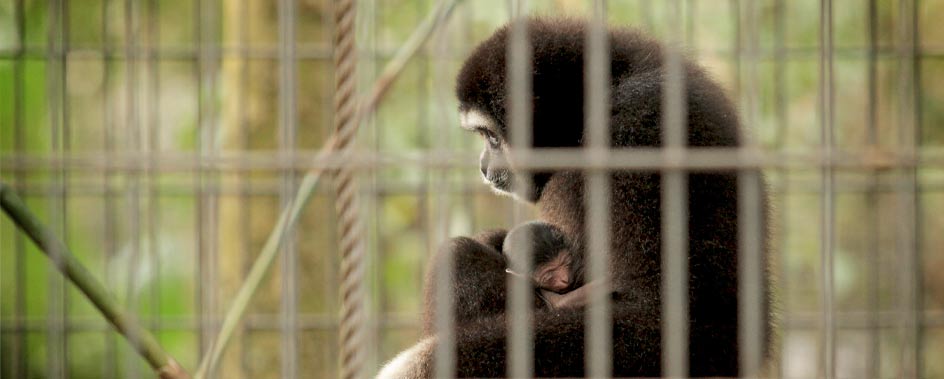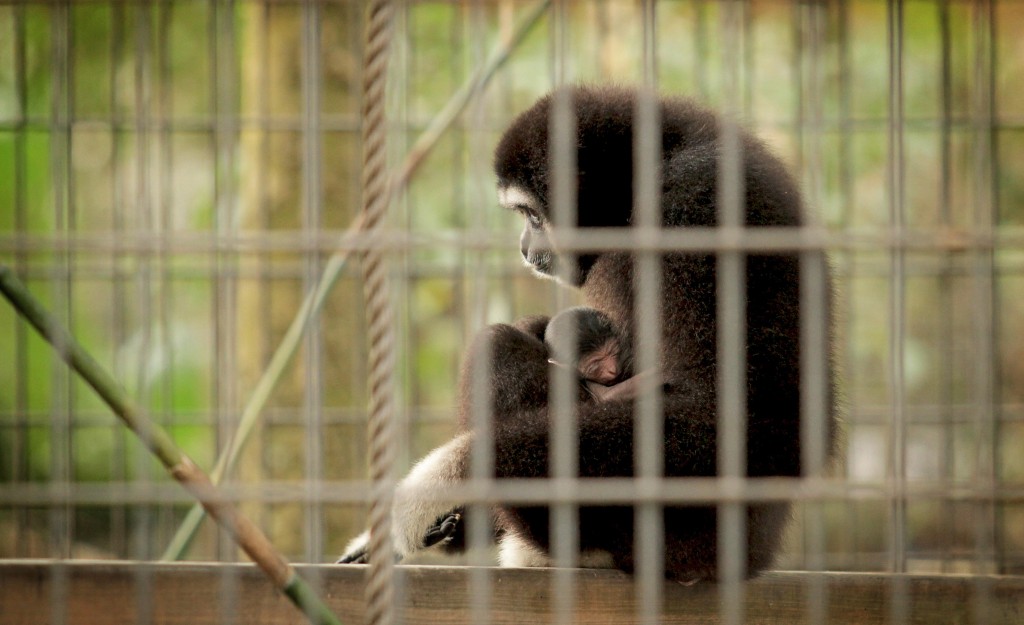At 8:45 a.m. on Tuesday, Oct. 23, the Santa Fe College Teaching Zoo welcomed a new arrival — a baby white-handed gibbon!
Zookeepers haven’t touched baby, named Rainer, and probably won’t for almost a year. “Mom is doing a great job of taking care of the baby and there is no need for us to interfere with that.” said Teaching Zoo Director Jonathan Miot.
Zookeepers are continuing the gibbons’ normal routine, including allowing visitors to the zoo, just not too close to the gibbon exhibit.
This is the second offspring for the Teaching Zoo’s gibbon pair, Cajun and Eddie. Cajun gave birth to Dulu at the zoo in July 2010. Together, Dulu and Rainer account for 25% of the gibbons born in U.S. at AZA zoos in the last three years.
“Gibbons are an endangered species that we have bred extremely well here at the Teaching Zoo,” said Miot.
Gibbons are members of the Association of Zoos and Aquariums’ Species Survival Plan because they are endangered in the wild. Populations have declined by 50 percent in the last 45 years due to habitat destruction and hunting.
Gibbons are found in the wild in northern Sumatra (Indonesia), peninsular Malaysia, Myanmar (east of the Salween River), Thailand, and marginally into southern China. They are tree dwellers — living in high canopies — and are monogamous and mate for life. They live in family groups of up to four individuals, but typically live in male-female pairs.


